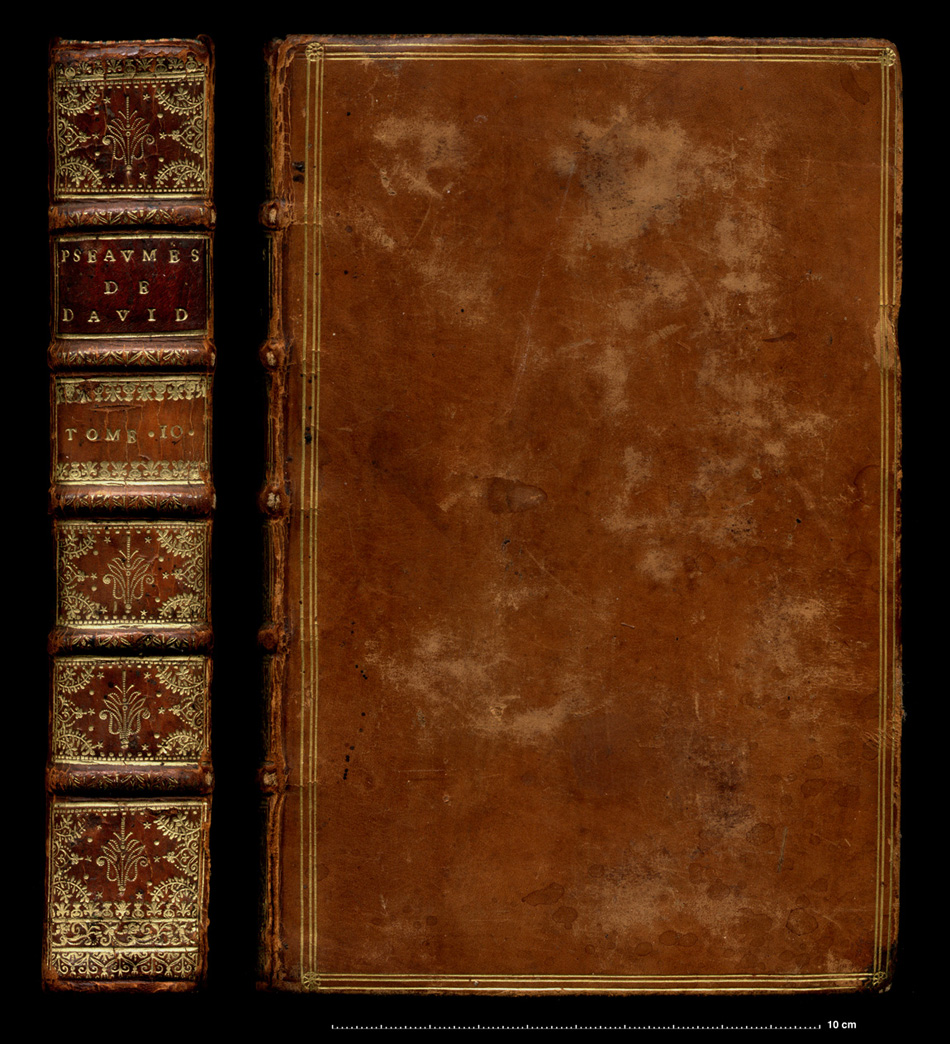

| The date of 1689 for this binding may or may not be accurate, however the gold tooled imprints certainly derive from the atelier of Luc-Antoine Boyet, and they compare well with those of a 1693 binding that we have already studied. Below we see the two spines compared at the same scale and much enlarged. On this page we will look at some of the tools that are not found on the 1693 example. |
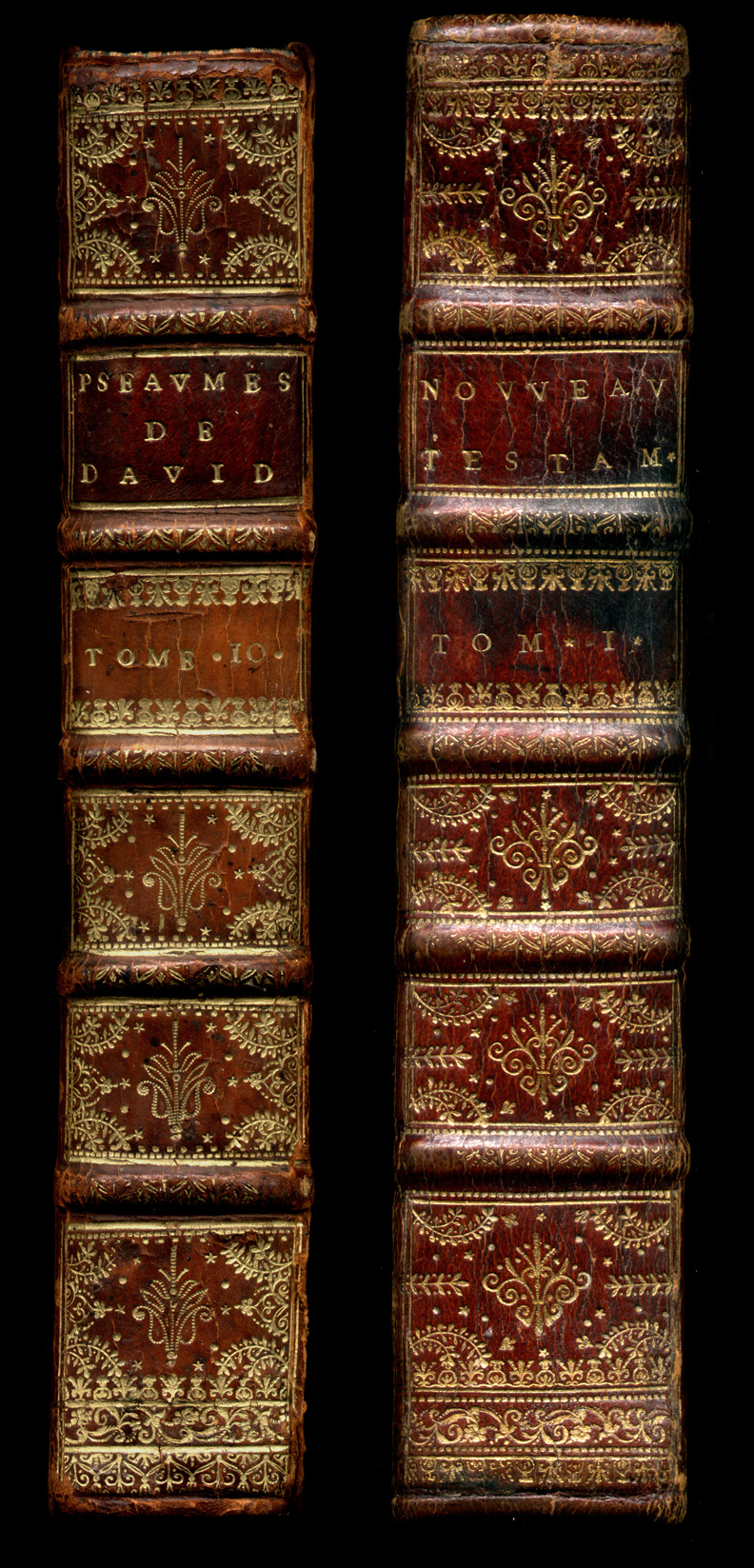
| Fortunately for our inventory of Boyet tools, certain of the imprints found on this binding are very clear and well preserved, allowing a rare opportunity to see all the fine details. I have enlarged the lab-16 imprint to 1200 dpi and sharpened the scanned image. We have looked at this imprint on a number of other occasions, however this is the first time that we can show it in such detail. |
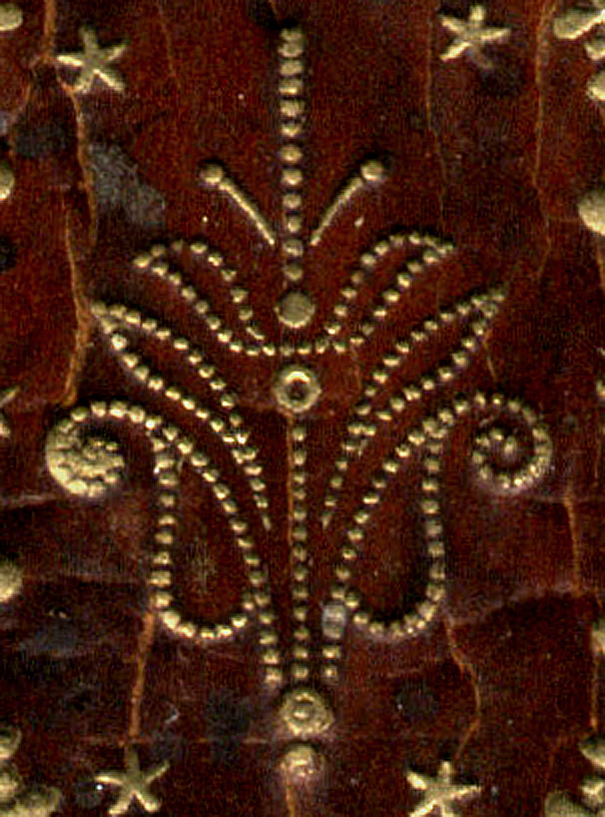
| On page 110 of their 2002 Paris publication entitled: Reliures françaises du XVIIe siècle : Chefs-d'oeuvre du musée Condé, Isabelle de Conihout & Pascal Ract-Madoux, have illustrated, under a title of "Fers du doreur de Boyet", a selection of rubbings of the more common tool imprints from bindings which they attribute to Luc-Antoine Boyet. In this limited presentation we find; 6 palettes (I - VI), 5 roulettes (A - E,; 6 large fleurons (1 - 6), and two tools (a, b) used in the construction of fans or wheels. The first two palettes shown as rubbing I. and II. are here found together at the bottom of the spine |

| We have looked at palette I. on another page where it is even sharper than this example, however you will see that it has been applied here in a reversed position (in the diagram above I have reversed it back to the normal orientation). While palette II. is an important tool that was used extensively to decorate the raised bands in many early examples. A sort of Boyet trademark, it is not always easy to recognize on typically well worn band surfaces, however the dots on each side of the stems, are quite often visable, being near the middle of the pallette. This style of palette was often copied by other binders who, in turn, used such a palette to decorate raised bands, however, the dots are often missing. |
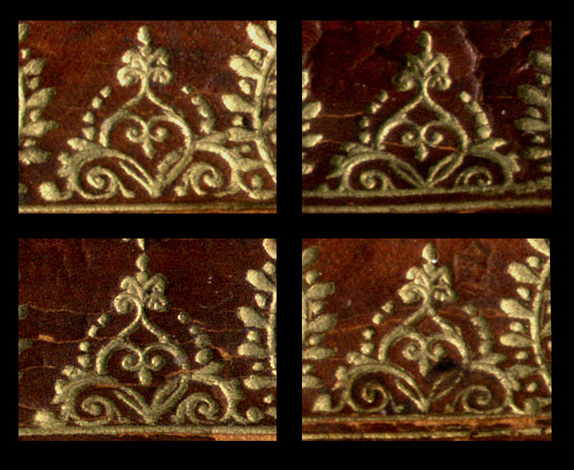
| The imprints shown above have been extracted from various locations in the spine panels (click on the image to see an enlargement). Due to the transverse convexity of the spine, the scanned image has been slightly distorted, and the imprints also hidden by the filets that frame the panels. Below I have recreated a virtual imprint of this tool, which is not perfect by any means but gives a better idea of the general appearance of this unusual imprint with it's distinct overlapping, entwined design. |

| One of the most consistent Boyet trademarks is the use of a triple filet to decorate the boards and the use of a small fleuron or geometric form such as this example to cover or mask the intersection of the filets in the corners. The unvarying arrangement of the filets with two closely spaced lines on the inside, is perhaps in fact always the same because of being produced by the use of one tool that lays down the three filets a the same time. Perhaps should be underlined here, however when we see that the spacing of these filets is always perfect, the answer is obvious. |
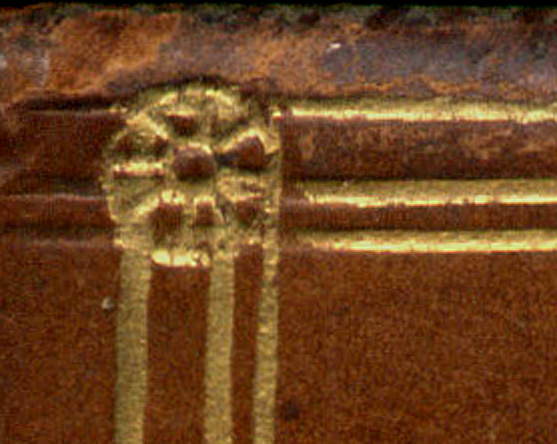
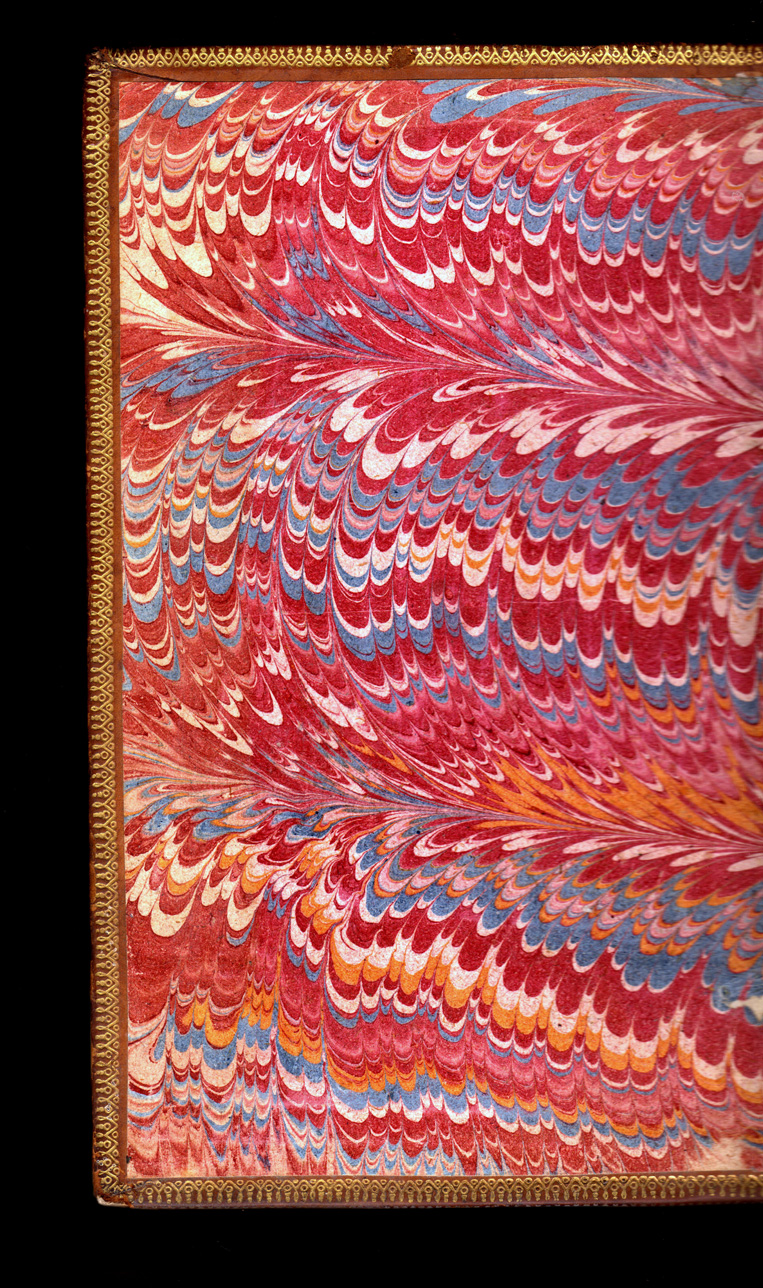
| Of particular interest is the decorative endpaper, described as papier peigne à frisons by Isabelle de Conihout & Pascal Ract-Madoux, who show this same type of paper used in the first Boyet binding in their 2002 catalogue, which is a dated example (1695). This accompanying roulette is not shown in their collection of rubbings, but I think is one that was used quite often to decorate the board edges, such as can been seen here. |
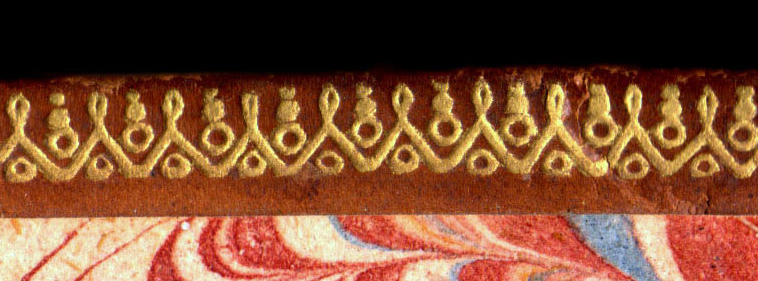
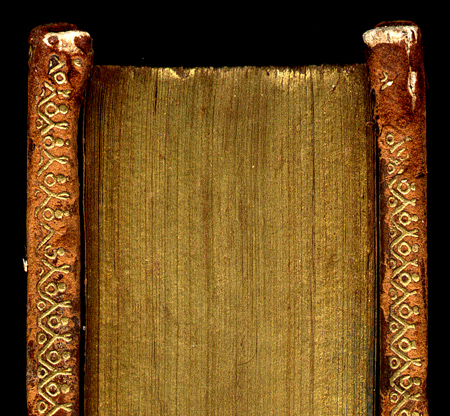
| I include here a final enlarged detail, which is the multicoloured headband (see a definition and another Boyet example at the bottom of this page). Here we see three colours, blue followed by red and then white. Note also the silk bookmarker or "signet". (Click on this image to see an enlargement). |
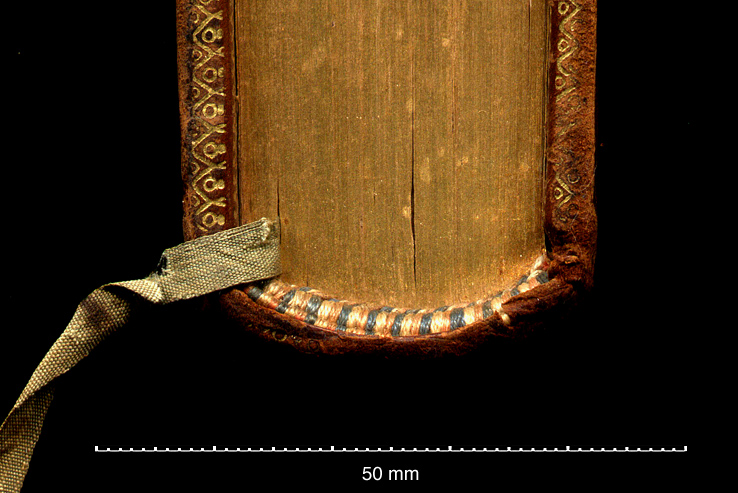
|
See also Luc-Antoine Boyet- 1693 Tool Identification or try this page. Decorative Dentelle by Luc-Antoine Boyet |
| Click on this link to return to Virtual Bookbinding | link to the home page of cyclopaedia.org |